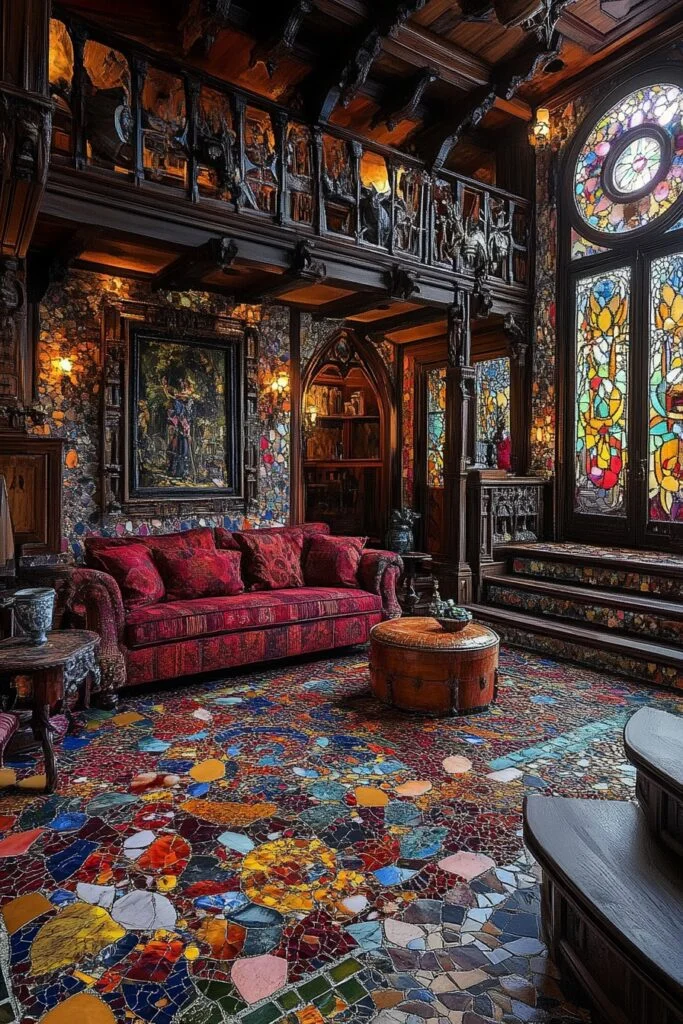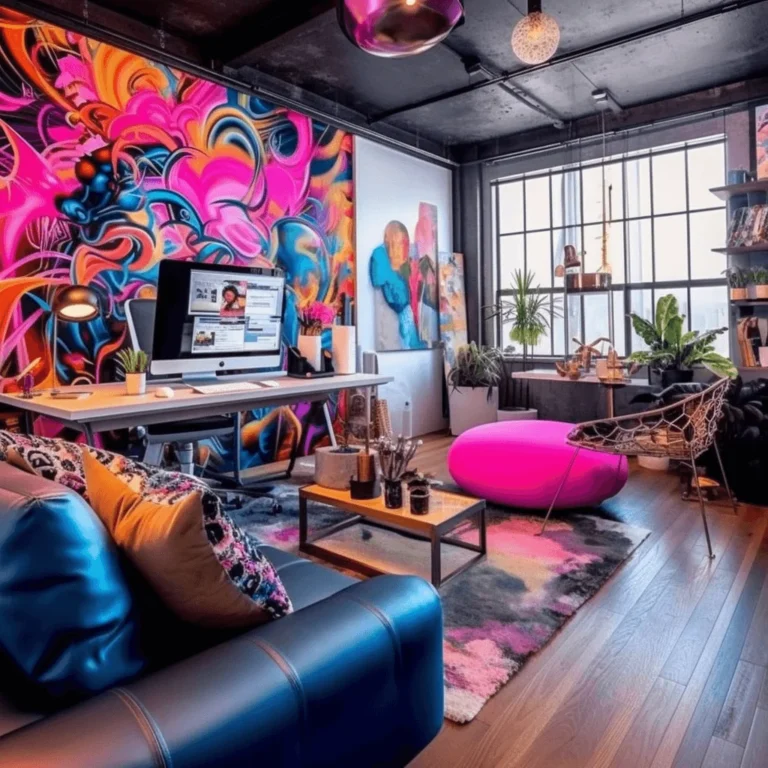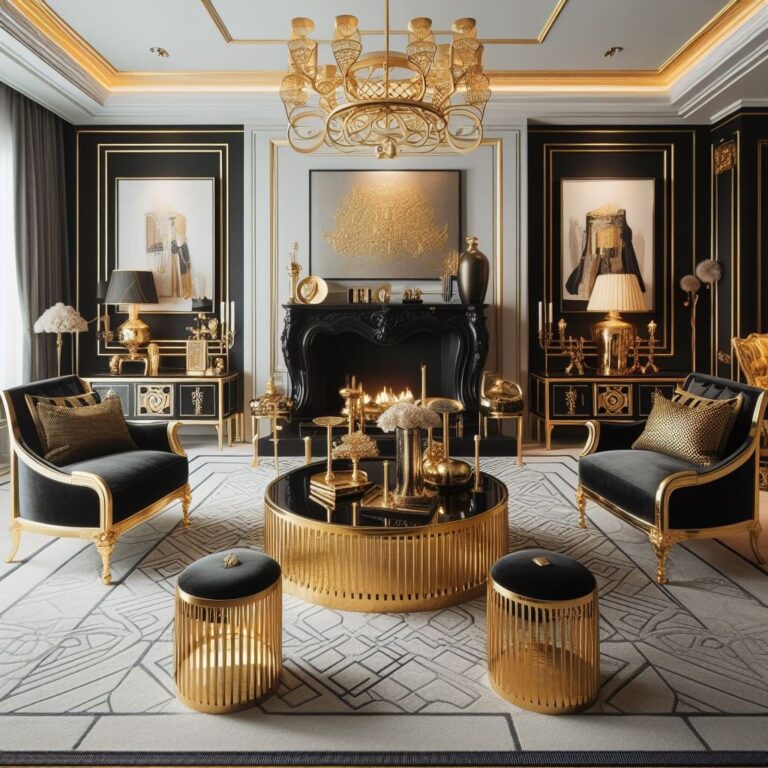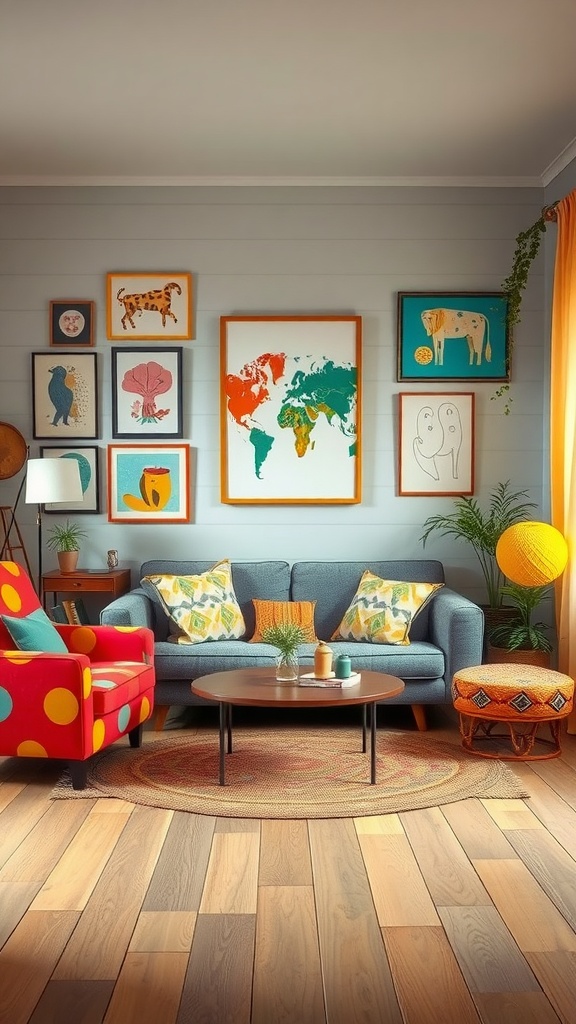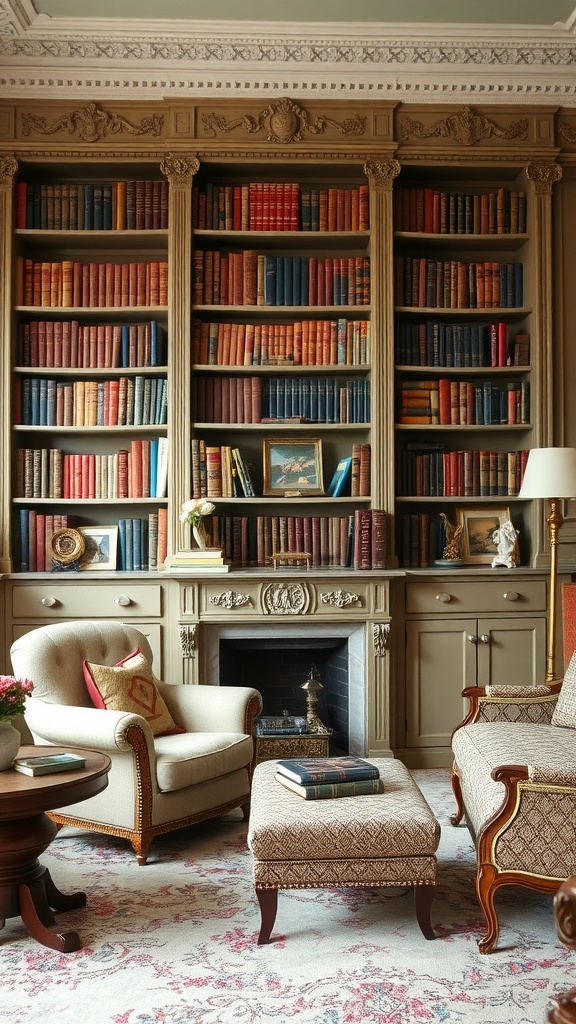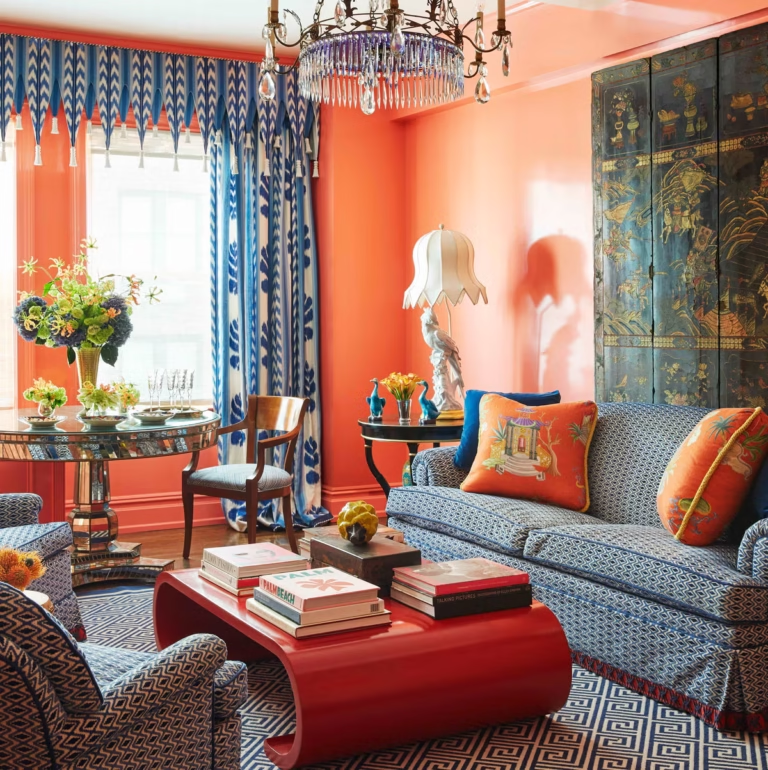13 Small Space Living Room Ideas
Small living rooms present a unique set of challenges, but with the right design choices, even the tiniest of spaces can become stylish and functional. Whether you’re working with an apartment, a studio, or just a smaller section of a larger space, the key is to maximize every square foot while maintaining an open and welcoming feel. From multi-functional furniture to clever storage solutions, this guide provides you with 13 small space living room ideas to help you make the most of your space. In this first part, we’ll dive into the first seven ideas, each aimed at transforming your cozy corner into a stylish sanctuary.
1. Embrace Minimalism
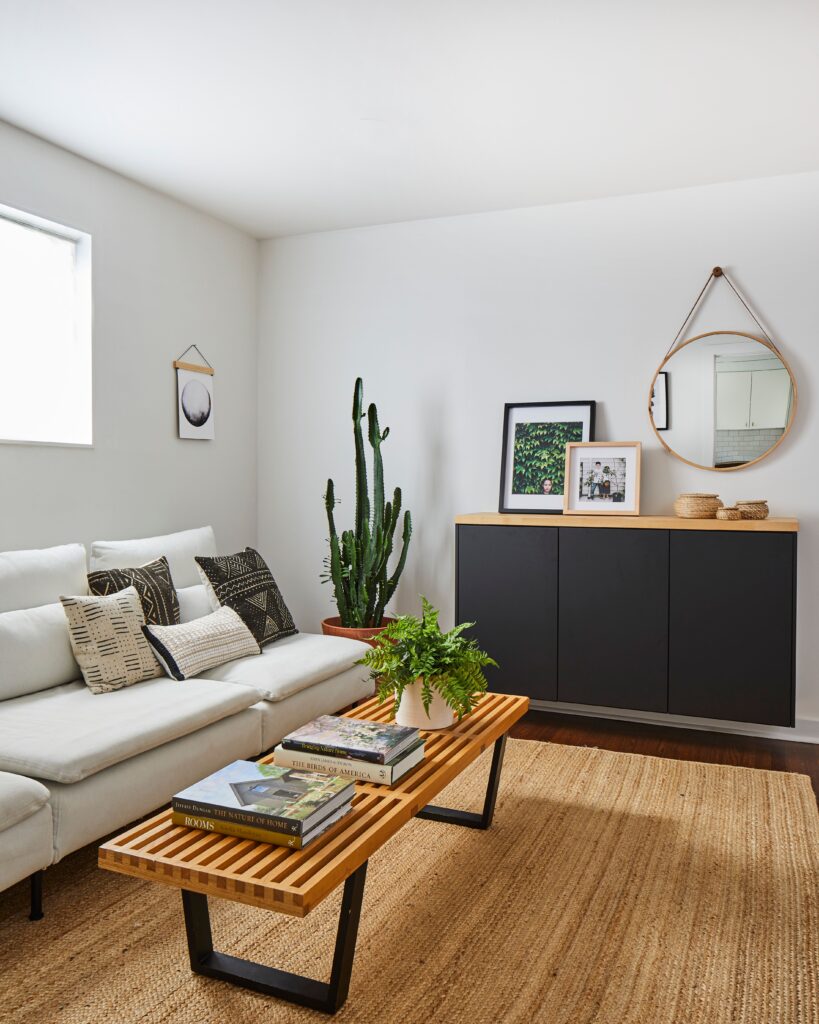
When it comes to small spaces, less is often more. Embracing minimalism in your living room design can make the area feel larger, more open, and less cluttered. Start by selecting only essential furniture pieces, and be mindful of the sizes you choose. Opt for sleek, streamlined furniture that doesn’t overwhelm the space. Instead of bulky armchairs or couches, consider a slim sectional or a set of minimalist chairs. Neutral colors—like soft grays, whites, or muted pastels—help make the room feel airy and expansive.
Additionally, keeping décor minimal is key to maintaining a sense of openness. Stick to a few well-chosen pieces of artwork, a simple coffee table, and perhaps a single accent chair. The idea is to create a serene, clutter-free environment that promotes relaxation without sacrificing style. Consider hidden storage solutions to keep personal items out of sight, further enhancing the clean, minimalist look.
2. Utilize Vertical Space
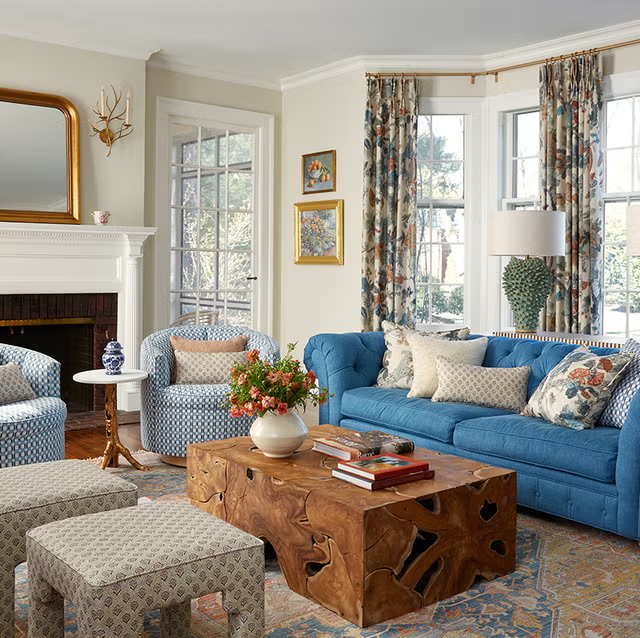
In a small living room, it’s essential to think beyond the floor. Vertical space is often underutilized but offers a great opportunity for storage and decoration. Start by adding shelves above your furniture, such as floating shelves or tall bookcases, to store books, plants, or decorative items. These pieces can keep your floors clear, maintaining the open feel of the room.
You can also use wall-mounted lighting instead of bulky lamps to save floor space. Pendant lights or sconces add a modern touch while freeing up space for seating or movement. If your ceilings are high, consider tall furniture like a narrow armoire or an elongated sideboard to draw the eye upwards. Vertical space helps create the illusion of height, making the room feel bigger.
3. Multi-Functional Furniture
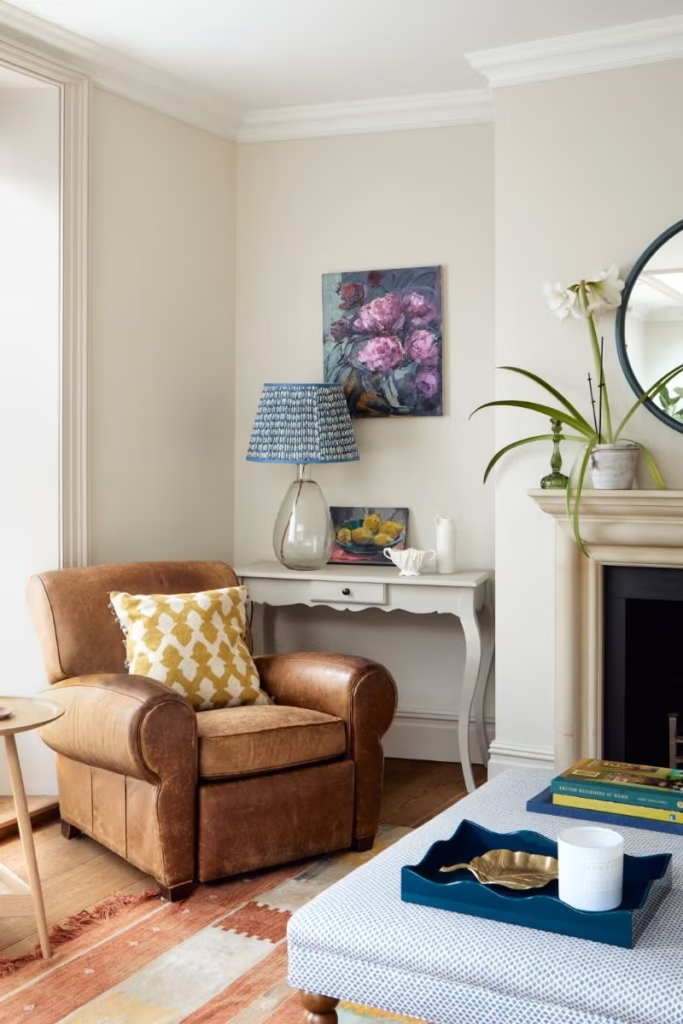
One of the best strategies for small living rooms is to incorporate multi-functional furniture. Items that serve more than one purpose can help reduce the number of pieces you need, keeping the room uncluttered. Look for sofas that double as storage units or ottomans that can act as both seating and a table. A foldable coffee table or a wall-mounted desk can save space and serve multiple needs depending on the time of day.
Even your storage options can be multi-functional. Instead of traditional storage bins, use stylish storage cubes that double as seating. For example, an ottoman with hidden storage space allows you to store extra blankets, magazines, or other items while acting as a place to rest your feet. The versatility of multi-functional furniture ensures your living room remains efficient without sacrificing style.
4. Use Light Colors to Open Up the Space
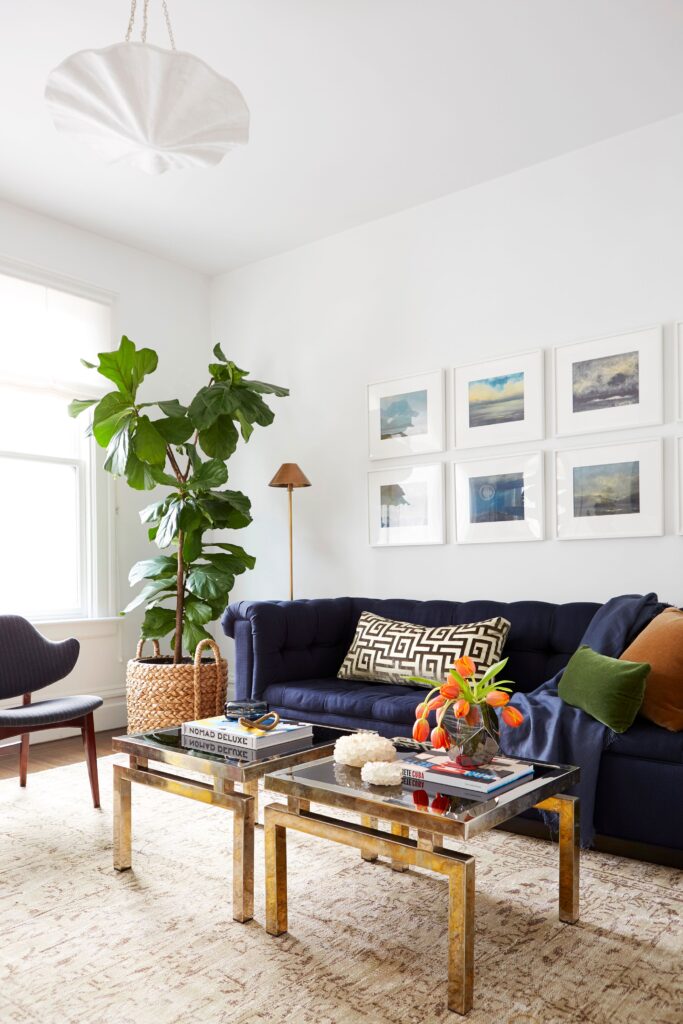
Light, neutral colors are a small space design secret. Whether you opt for soft whites, pale blues, or muted grays, these hues help make a small room feel bigger and brighter. Light colors reflect more natural light, creating the illusion of space. Paint the walls in light shades to give your room a fresh, open feel, or use lighter shades of furniture to maintain an airy atmosphere.
If you want to add pops of color to your living room, consider incorporating them through accessories like throw pillows, rugs, and artwork. A colorful rug can add personality to the room without overwhelming the space. For a sophisticated touch, try using accent colors like soft mustard yellow, pale coral, or even a muted olive green for a modern twist on classic neutrals.
5. Choose Furniture with Exposed Legs
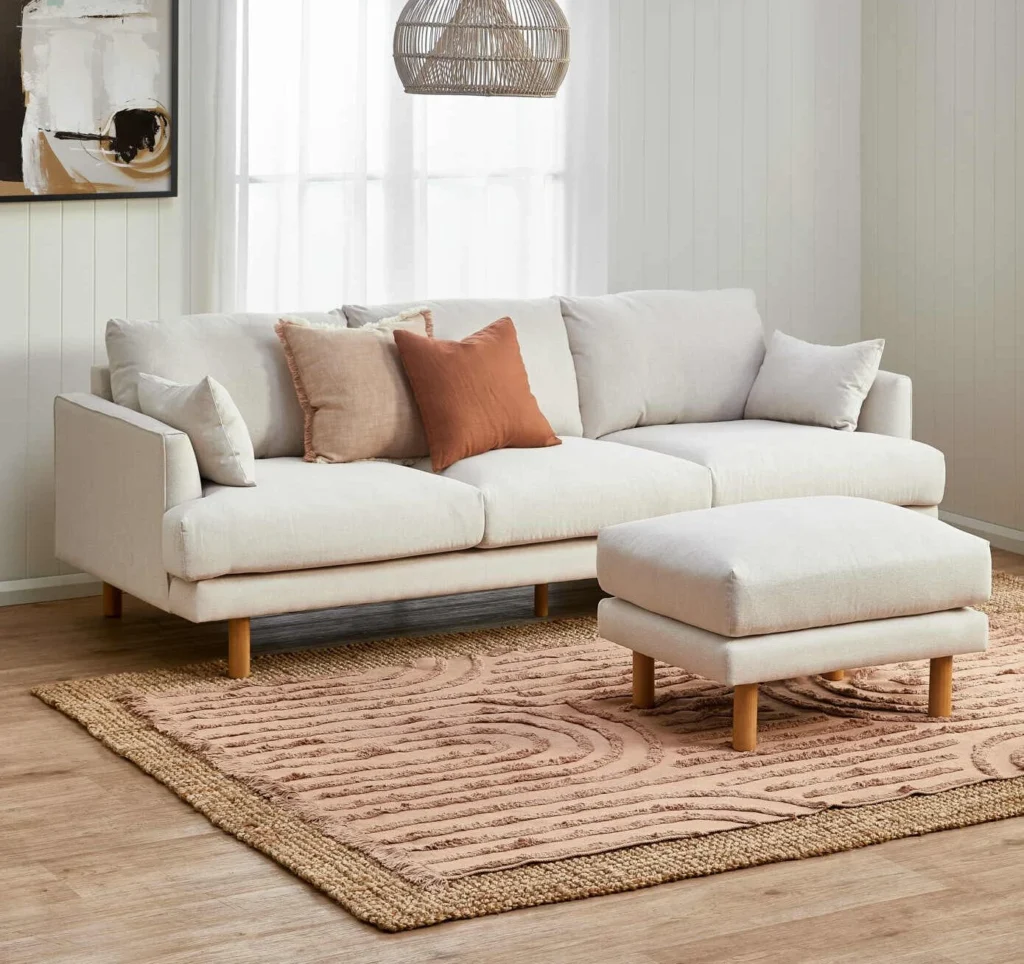
Furniture with exposed legs is an easy design trick that can make a small living room feel more open and spacious. It helps create a sense of lightness and allows more of the floor to be visible, which visually expands the space. Look for sofas, chairs, and tables with slim legs, preferably made of wood or metal, that provide a sense of airiness.
Exposed legs also make it easier to clean under furniture, helping to maintain a clutter-free and neat appearance. In addition, you can use the space underneath for storage baskets or decorative items, making it both practical and visually appealing. Whether you opt for mid-century modern pieces or more contemporary designs, the goal is to keep the furniture feeling light and open.
6. Incorporate Mirrors for Reflection
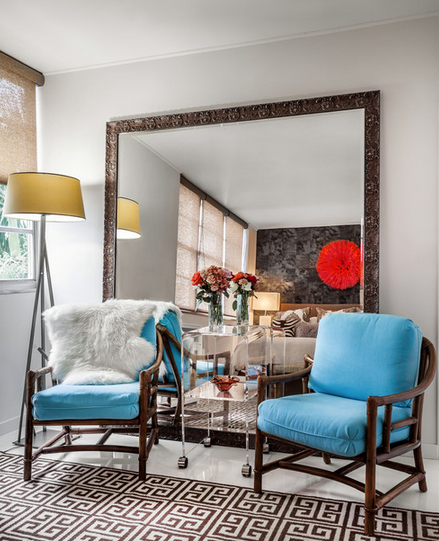
Mirrors are one of the best tricks to create the illusion of space in a small living room. They reflect both natural and artificial light, which can help brighten up the room and make it feel larger. A strategically placed mirror, such as above a sofa or on an adjacent wall, can enhance the sense of depth and openness.
When choosing mirrors, think about the style that fits your room’s aesthetic. Large, statement mirrors can serve as a focal point, while smaller mirrors can be grouped together for a more modern, dynamic look. If you want to add even more visual interest, consider mirrored furniture or décor pieces. Not only do they reflect light, but they also give the room a touch of glamour and elegance.
7. Keep the Floor Plan Open
Source
In small living rooms, it’s essential to keep the floor plan open and avoid overcrowding the space with too much furniture. By arranging your furniture in a way that doesn’t block pathways, you allow for easy movement and better flow throughout the room. Try using a layout where key pieces, such as the sofa or armchair, are positioned away from walls, creating a sense of openness.
To maintain an open feel, avoid large furniture pieces that dominate the space. Instead, opt for smaller, more functional items that are easy to move around. Additionally, using area rugs to define spaces within the room can help you separate different functional zones—like a cozy reading nook or a TV-watching area—without physically dividing the room with walls. The more open the floor plan, the more spacious the room will feel.
8. Incorporate Vertical Gardens or Plants
Source
Plants are an excellent way to bring life to any living room, and in small spaces, vertical gardens or hanging plants can save floor space while adding natural beauty. Vertical gardens, or plant walls, are a trendy way to grow your favorite plants without taking up valuable real estate on the floor. You can install a small vertical garden using shelves or hanging planters on the wall, creating a green, calming atmosphere in your space.
If a full vertical garden isn’t feasible, hanging plants like ivy or succulents can be placed in stylish wall-mounted pots or from ceiling hooks. Not only do plants improve air quality and add texture, but they also provide a burst of color, making the room feel more vibrant and alive. If you’re limited on natural light, choose low-maintenance plants such as snake plants or pothos that thrive in low light, ensuring you can still enjoy the benefits of greenery in your small space.
9. Layer Your Lighting
Source
Lighting is crucial in a small living room, as it can significantly influence how the space feels. In tight spaces, it’s important to have a variety of light sources to avoid making the room feel dim or confined. Layering different types of lighting—ambient, task, and accent—will create a warm and welcoming atmosphere while visually expanding the room.
Start with ambient lighting, like ceiling-mounted fixtures or recessed lighting, to provide even, general illumination. Add task lighting, such as a stylish floor lamp or table lamps, for reading or other activities. Finally, incorporate accent lighting to highlight artwork, plants, or architectural features. String lights or LED strips can be used to add a whimsical touch or illuminate shelves. The key is to use a combination of light sources to create balance and warmth without overwhelming the space.
10. Go for Multi-Use Zones
Source
In a small living room, creating multi-use zones is an excellent way to make the most of the space available. Rather than having a single-purpose area, consider how the room can serve different functions throughout the day. For example, you might design a reading nook within one corner, a TV-watching zone with the sofa and coffee table, and a small office area with a compact desk.
Use rugs, furniture placement, or lighting to clearly define each zone. This approach allows you to have a multifunctional space where you can relax, work, and entertain without it feeling cramped. Incorporating pieces like foldable desks or ottomans that can double as seating or storage is a smart way to maximize the utility of your room. With a little creativity, you can create a space that adapts to your needs without feeling cluttered.
11. Invest in a Statement Piece
Source
Even in small spaces, you can make a bold design statement. One of the easiest ways to do this is by incorporating a statement piece into your living room, such as a striking piece of artwork, a vibrant throw rug, or a unique piece of furniture. A large painting or a colorful accent chair can instantly draw attention and elevate the room without overwhelming the space.
A statement piece works well in small rooms because it creates a focal point, making the room feel more intentional and styled. Just ensure that the piece complements the overall color scheme and doesn’t dominate the space. For instance, a statement sofa in a bold color paired with neutral decor can add personality without overcrowding the room.
12. Open Shelving
Source
Open shelving is a great way to keep things accessible while maintaining an open, airy feel in a small living room. Unlike traditional cabinets, open shelving allows you to display books, art, plants, or other decorative items, making the space feel more personal and inviting. These shelves can be mounted on walls or used as freestanding units depending on your room’s layout.
One advantage of open shelving in small spaces is that it encourages a tidy appearance, as it forces you to keep only the essentials on display. If you prefer a more minimalist approach, opt for sleek, floating shelves that disappear into the wall for a modern look. Just be mindful of the items you place on the shelves—too many objects can lead to visual clutter. Try grouping items into collections or creating simple vignettes for a well-balanced display.
13. Consider the Layout Carefully
Source
The layout of your living room plays a crucial role in how the space feels and functions. In a small room, the arrangement of your furniture is one of the most effective ways to maximize space and make the room feel open and inviting. One approach is to center the seating area around a focal point, like a television, fireplace, or even a window with a beautiful view.
Avoid pushing all the furniture against the walls. Instead, consider floating your sofa or chairs in the middle of the room to create a more open, balanced layout. If you have a narrow room, arrange the furniture parallel to the longest wall to optimize the flow of the space. Additionally, keeping pathways clear and avoiding overcrowding is essential for maintaining a comfortable and functional room.
Conclusion
Designing a small living room doesn’t mean you have to sacrifice style or functionality. By making thoughtful design choices, you can create a space that feels open, inviting, and uniquely yours. From embracing minimalism and incorporating multi-functional furniture to maximizing vertical space with plants and mirrors, each of these small space living room ideas allows you to make the most out of every inch of your room.
Remember to consider your personal style and needs when applying these ideas. Whether it’s using light colors to expand the space, layering lighting to create ambiance, or integrating clever storage solutions like open shelving, the possibilities for transforming your small living room are endless. With these creative tips and a little imagination, you can turn your compact living room into a comfortable and stylish retreat, no matter how small the space may be.


